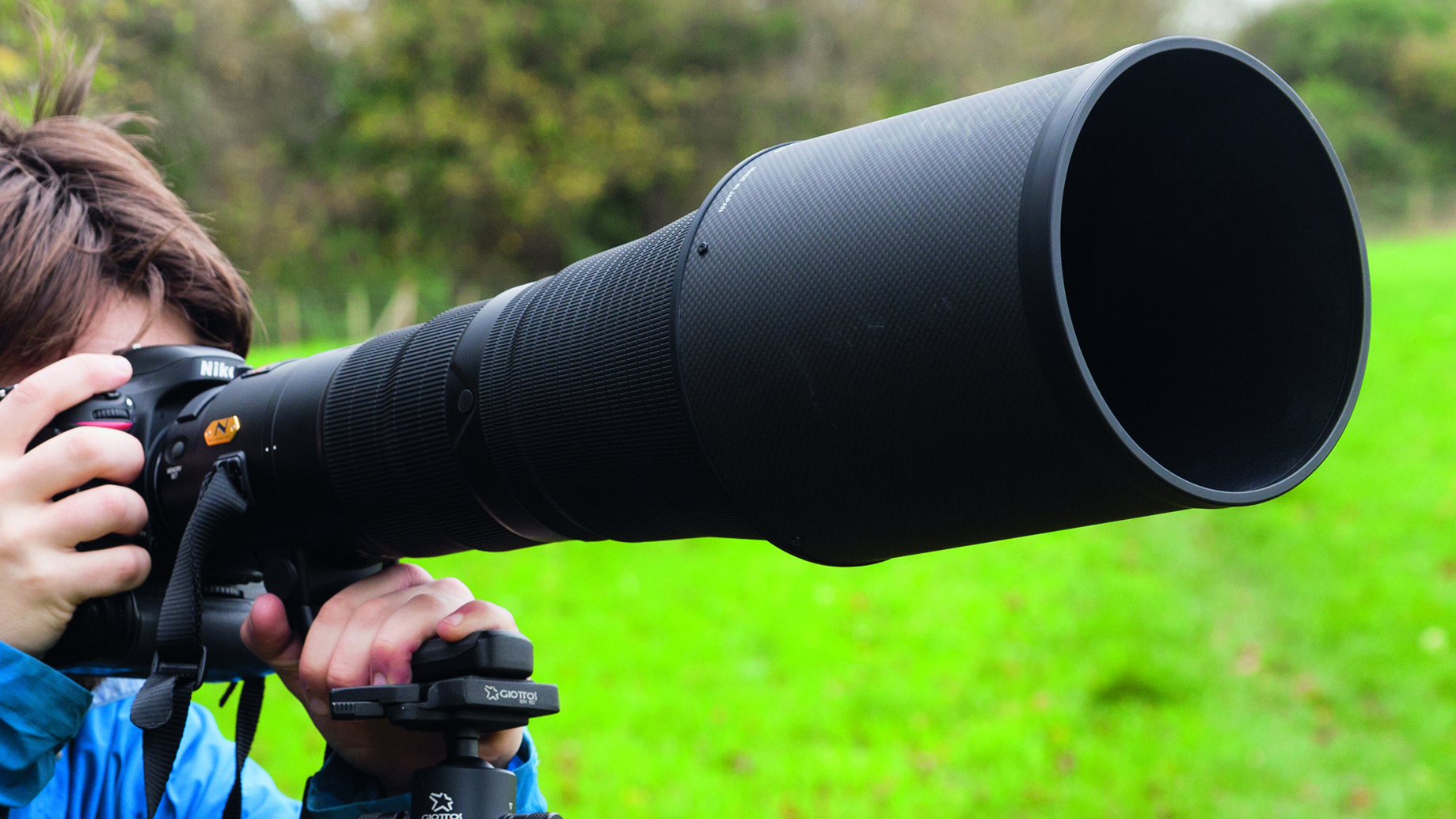Nikon Z5 vs Z50: even the names sound (nearly) the same, so which is the best?
The Nikon Z5 is Nikon's most affordable full-frame mirrorless camera. How does it compare with the APS-C format Z50?
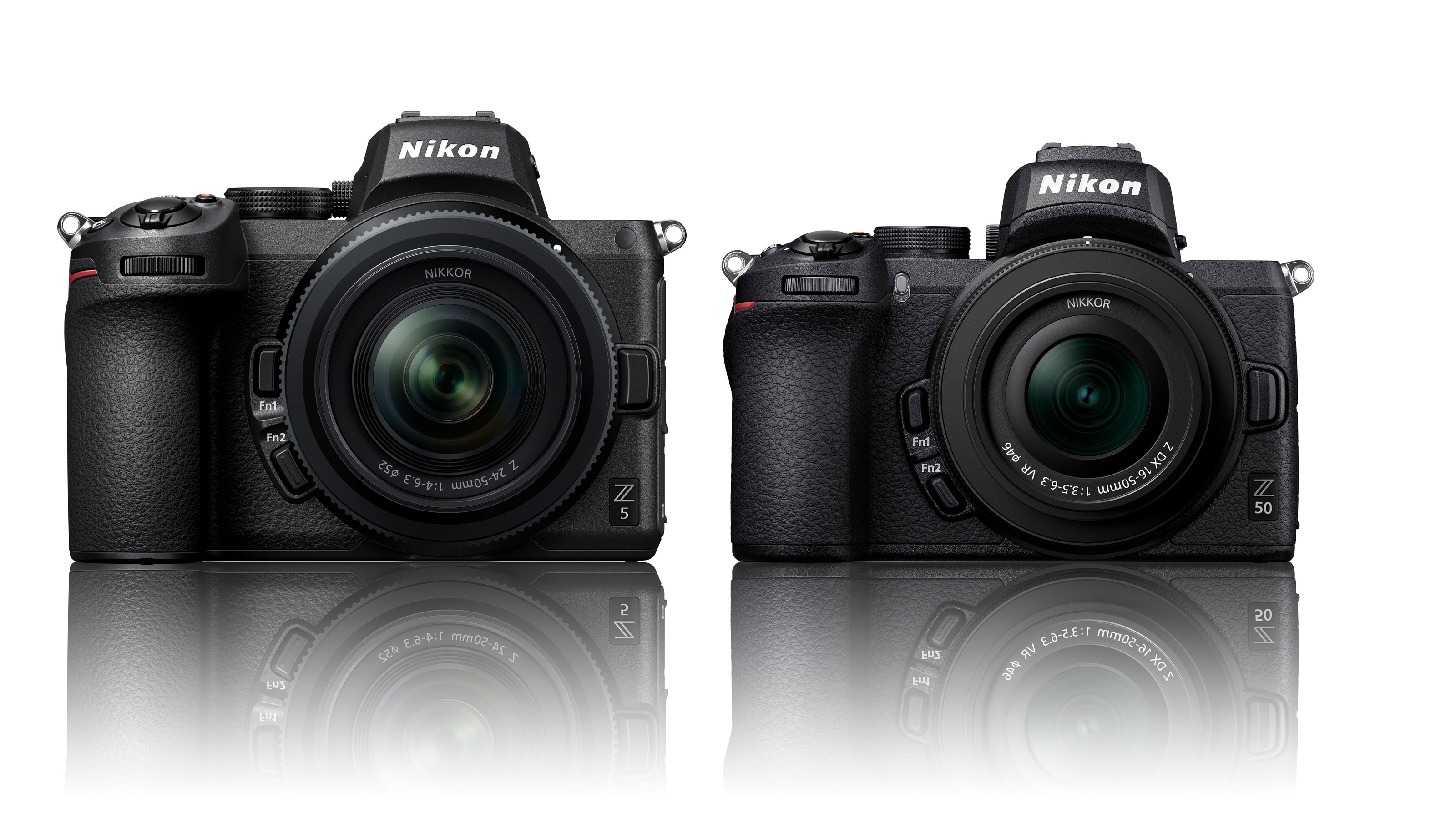
Nikon’s Z5 is an attractively affordable full-frame mirrorless camera with a great array of features, but you can save yourself a significant slice of cash by opting for the APS-C (DX) format Z50 instead.
While both cameras have Nikon’s Z mount, which means they can accept the same lenses, there’s a 1.5x crop factor applied with the Z50 because of the smaller sensor. However, opting for the Z50 means that you can save more money by going for Nikon’s DX format lenses and they are smaller and lighter than their full-frame counterparts. It all adds up to make the Z50 a tempting alternative to the Z5.
In this post, we’ll take a look at the key differences between the Nikon Z5 and Z50 so you can decide which model best suits you and your photography.
• Also see: Nikon Z30 vs Nikon Z50 vs Nikon Z fc
1. Sensor
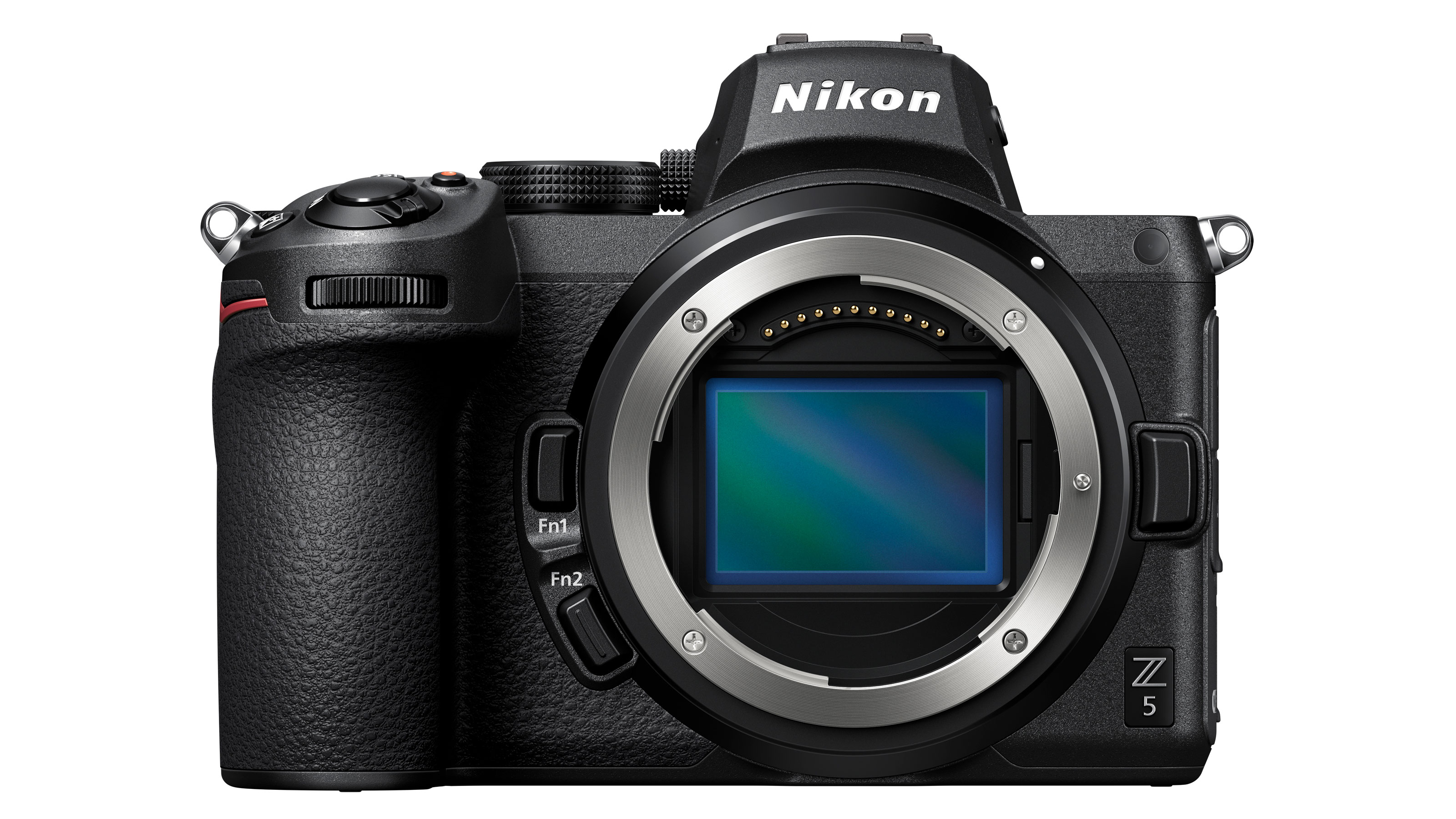
• Nikon Z5: 24.3MP Full-frame (35.9 x 23.9mm) CMOS
• Nikon Z50: 20.9MP APS-C (23.5 x 15.7mm) CMOS
As we’ve already mentioned, the Z5 has a full-frame sensor whereas the Z50 has an APS-C or DX format chip. This means that any full-frame lens mounted on the Z50 looks to have a focal length that is around 1.5x longer than when it’s on the Z5. However, when a DX format lens is mounted on the Z5, it crops the image so that it matches what you see with the Z50.
The Z50 also has a lower resolution than the Z5, 20.9MP rather than 24.3MP. This helps to maintain the size of the pixels despite the smaller sensor size. Consequently, both cameras have the same native sensitivity range of ISO 100-51,200 however, the Z50 has a higher maximum expansion value of ISO 204,800 while the Z5 tops out at ISO 102,400 yet has lower settings going down to ISO 50.
2. Viewfinder
• Nikon Z5: 0.5-inch 3,690,000-dot OLED
• Nikon Z50: 0.39-inch 2,360,000-dot OLED
As usual with an APS-C format camera, the Z50 has a physically smaller and lower resolution electronic viewfinder (EVF) than the full-frame Z5. This means that while the Z50’s EVF is more than adequate, the Z5’s gives a more comfortable viewing experience.
3. Screen
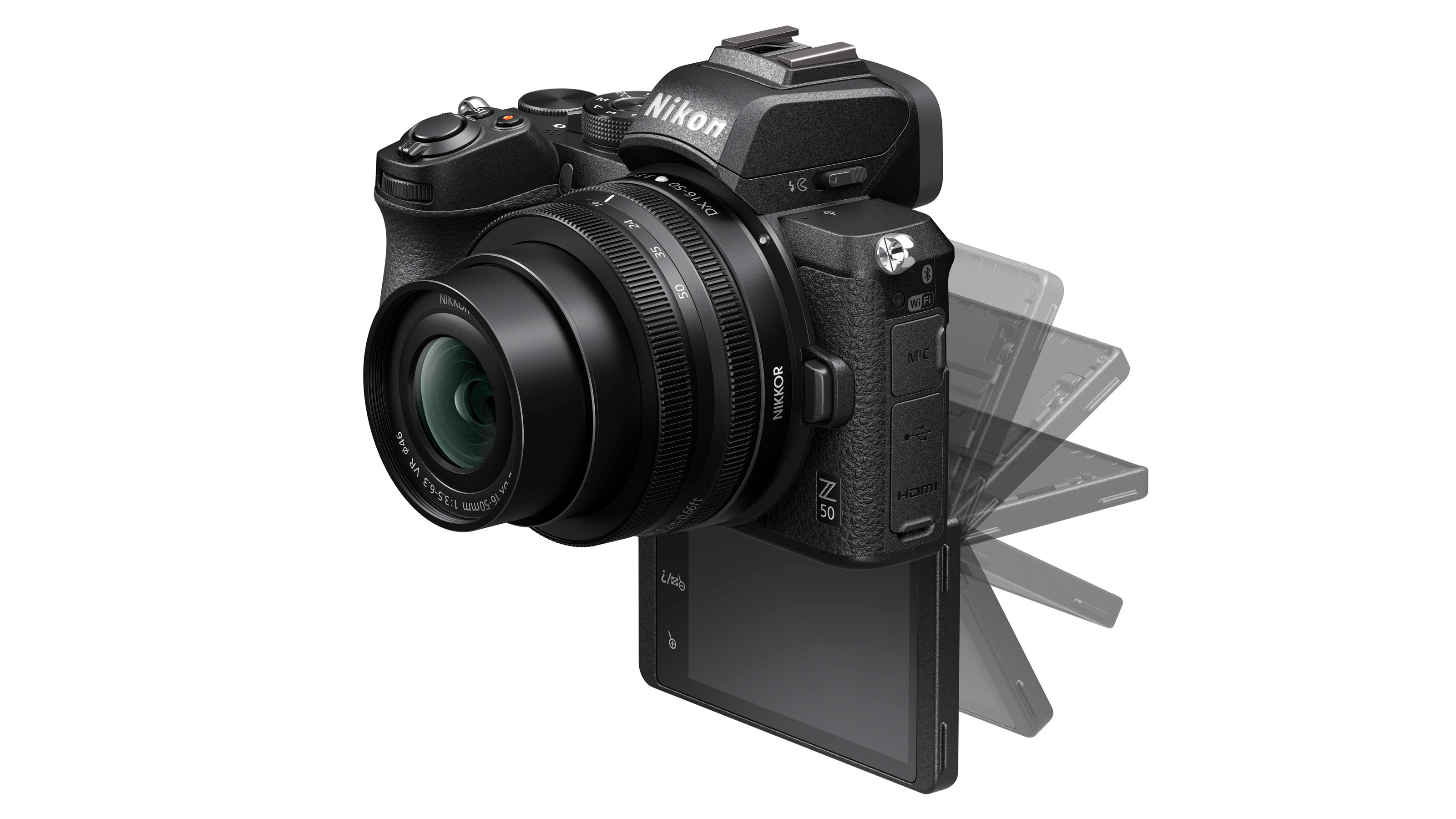
• Nikon Z5: 3.2-inch 1,040,000-dot tilting touch-screen
• Nikon Z50: 3.2-inch 1,040,000-dot tilting touch-screen
The basic specifications of the screens don’t reveal a key difference between the Z50 and Z5. While they are both tilting screens, the Z5’s screen can only be tipped up for viewing from below head-height, or down for viewing from above head-head, it can’t tip down through 180° like the Z50’s to enable it to be seen from in front of the camera. This makes the Z50 a better choice for anyone interested in shooting selfies or vlogging. However, it’s important to note that you’ll need a special bracket to hold the camera if you plan on mounting the camera on a tripod while viewing the screen from the front.
4. Autofocus system
• Nikon Z5: Hybrid with 273 points
• Nikon Z50: Hybrid with 209 points
While the Z50 has fewer AF points because of the smaller sensor size, they still cover 90% of the imaging area, just like the Z5. This means that the cameras can track subjects close to the corners of the frame.
The two cameras also offer Face and eye detection in stills mode and it can be set to look for human or animal eyes.
5. Stabilisation
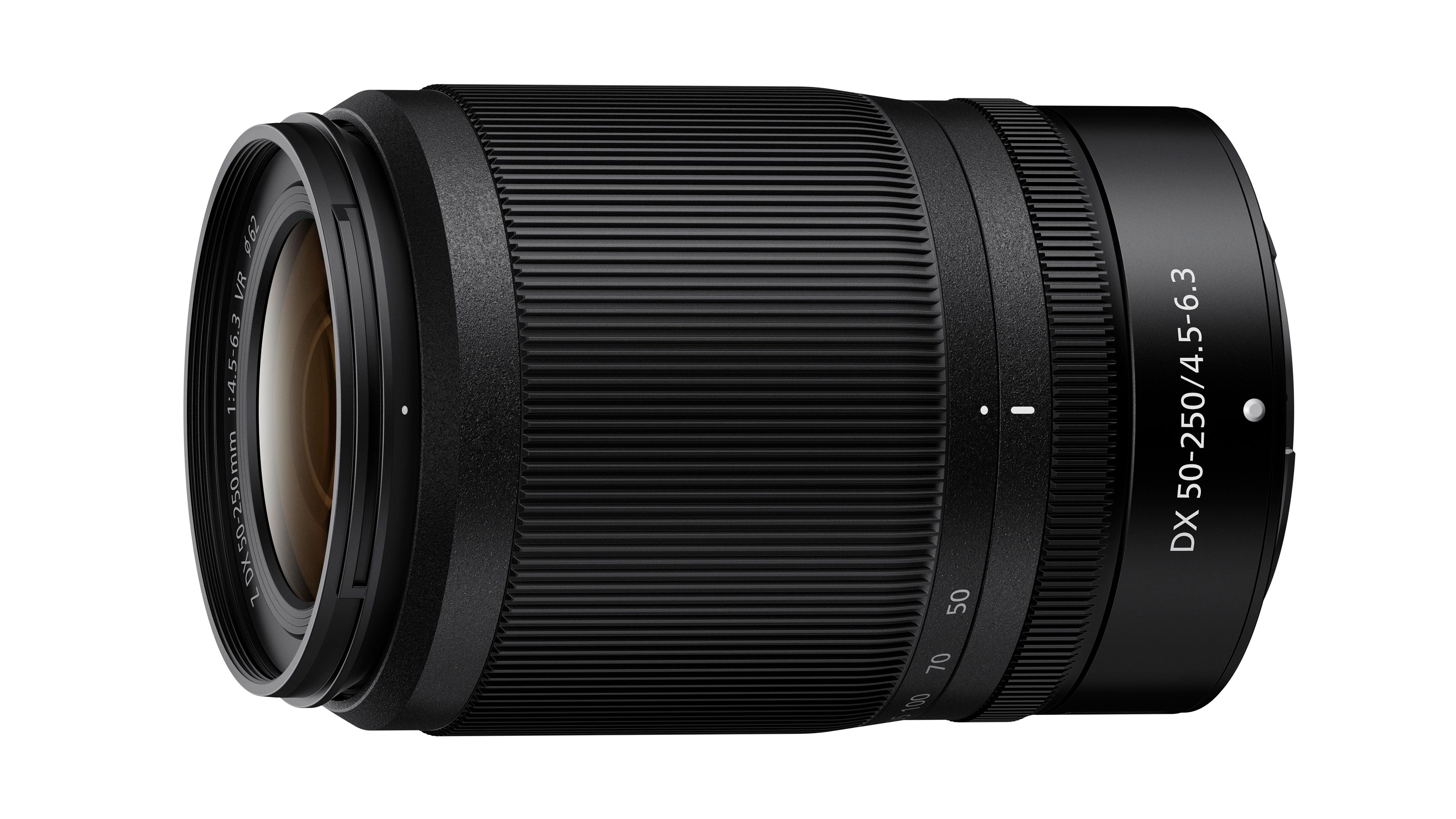
• Nikon Z5: 5-axis to 5EV
• Nikon Z50: Lens-based
Like Nikon’s other full-frame mirrorless cameras, the Z5 has in-body stabilization (IBIS). This operates across 5 axis and offers a shutter speed compensation factor of up to 5 EV, it also works with any mounted lens.
The Z50 doesn’t have in-body stabilization but it can benefit from Nikon’s VR stabilization system built into some lenses. That’s something to keep in mind when selecting lenses to go with the camera.
See also: Best lenses for Nikon Z5 • Best lenses for Nikon Z50
6. Video capability
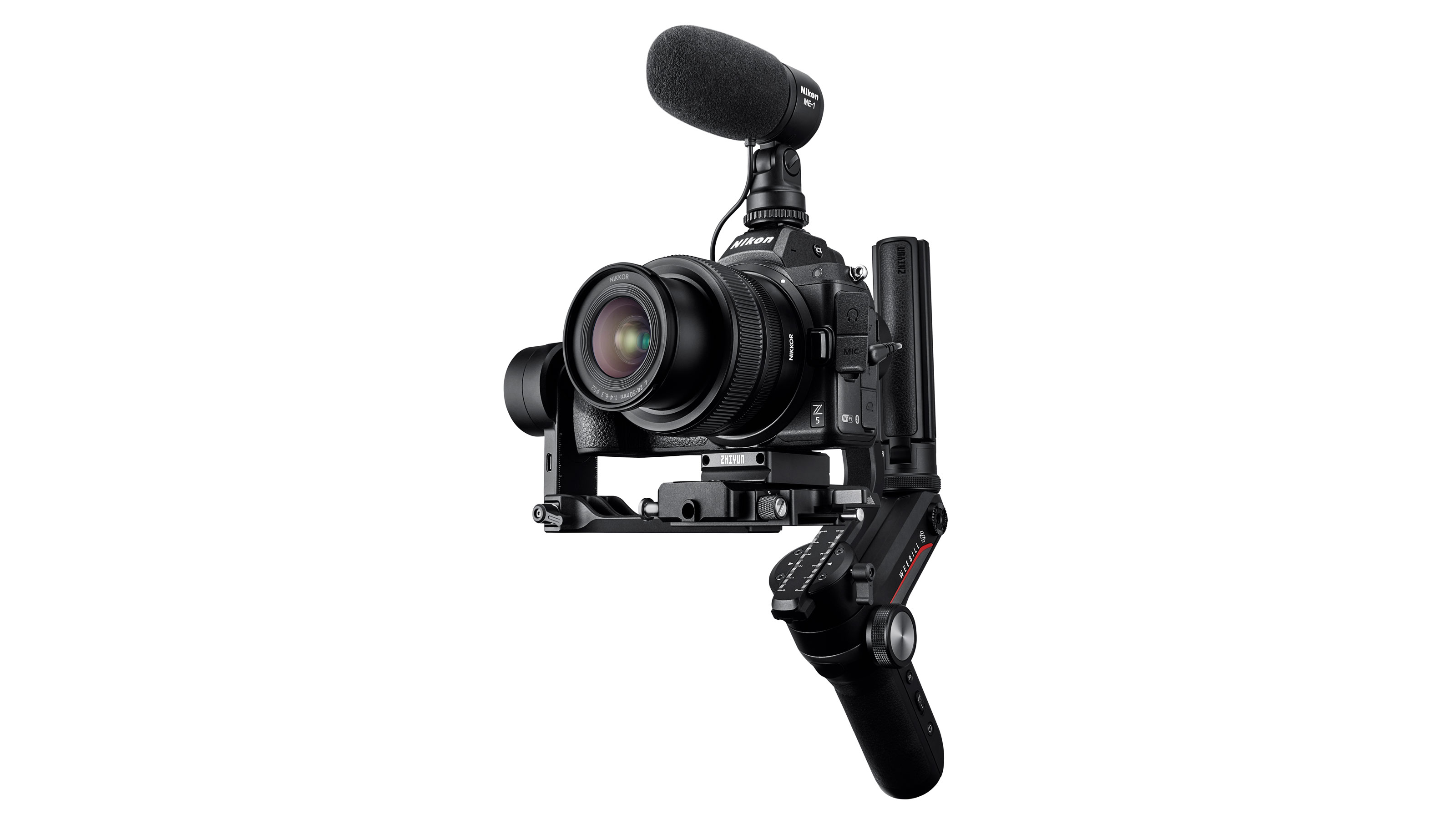
• Nikon Z5: 4K (3840 x 2160) at up to 30p with 1.7x crop, Full-HD at up to 60p
• Nikon Z50: 4K (3840 x 2160) at up to 30p, Full-HD at up to 120p
Although both cameras are capable of shooting 4K video, there’s a heavy (1.7X) crop applied to the footage shot on the Z5. This means that a full-frame lens looks 1.7x longer than it does in stills mode. Meanwhile, the Z50 shoots using the full width of its sensor.
The Z50 also has the advantage of being able to shoot Full-HD footage at ups 120fps while the Z5 only goes up to 60fps.
Both cameras have a 3.5mm input for an external microphone, but only the Z5 offers a port for plugging in a set of headphones.
7. Continuous shooting
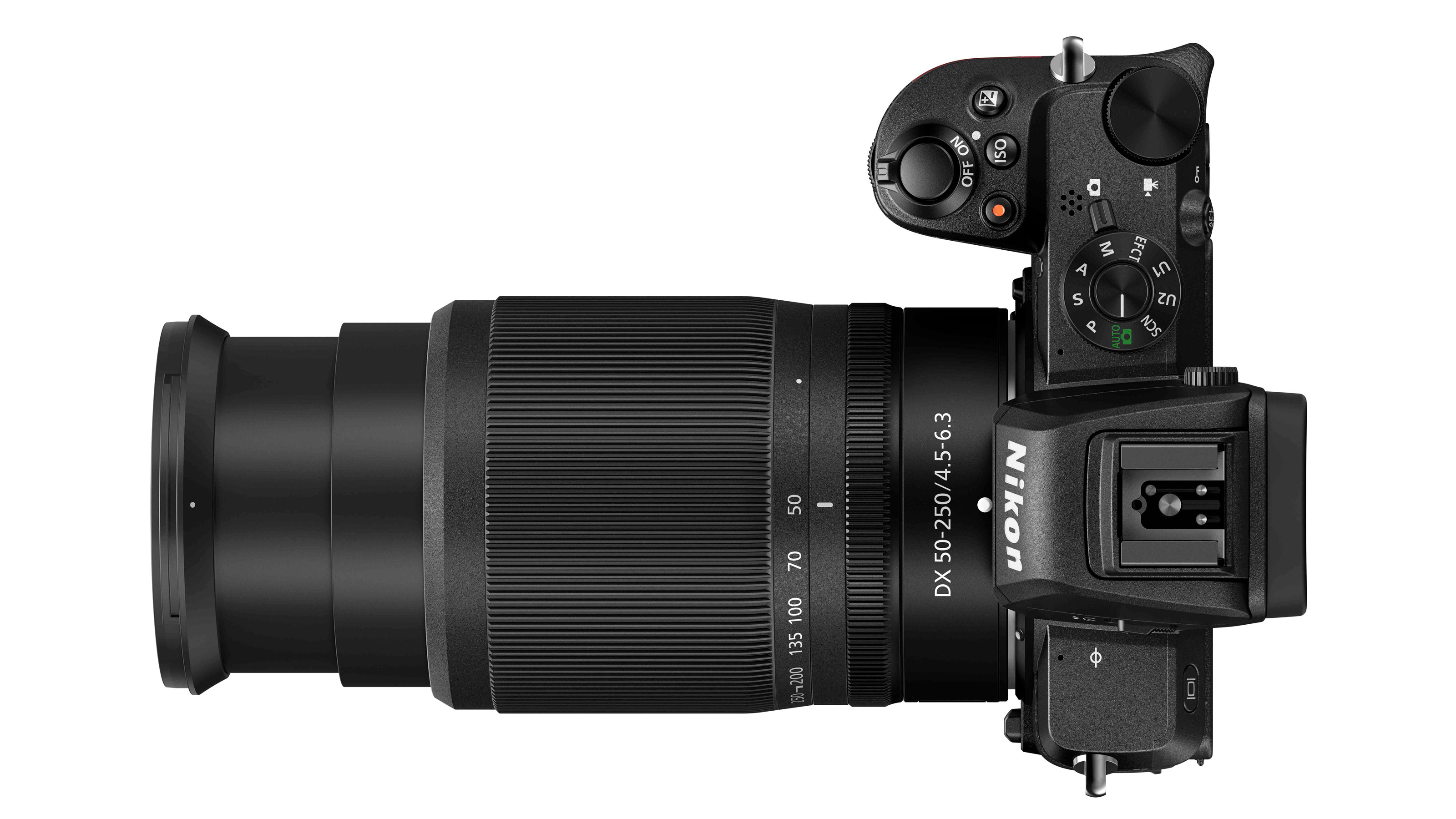
• Nikon Z5: 4.5fps
• Nikon Z50: 11fps
The Z50 is a clear winner for anyone interested in shooting split-second action as it has a maximum continuous shooting rate of 11fps with full autofocus and metering capability. The Z5’s maximum rate is an underwhelming 4.5fps.
Despite its faster shooting rate, the Z50’s maximum shutter speed is 1/4000sec whereas the Z5’s is 1/8000sec.
8. Size and weight
• Nikon Z5: 134 x 100.5 x 69.5mm, 675g with battery and memory card
• Nikon Z50: 126.5 x 93.5 x 60mm, 450g with battery and memory card
Using a smaller sensor enables the Z50 to be smaller and lighter than the Z5. This becomes particularly noticeable if you pair the Z50 with DX lenses, especially with compact optics like the Nikkor Z DX 16-50mm f/3.5-6.3 VR. Consequently, the Z50 makes a nice choice for travel photography or if you want to carry the camera over long distances on foot.
It’s worth noting at this point that despite its smaller size and weight, the Z50 features a built-in pop-up flash whereas the Z5 does not.
9. Storage
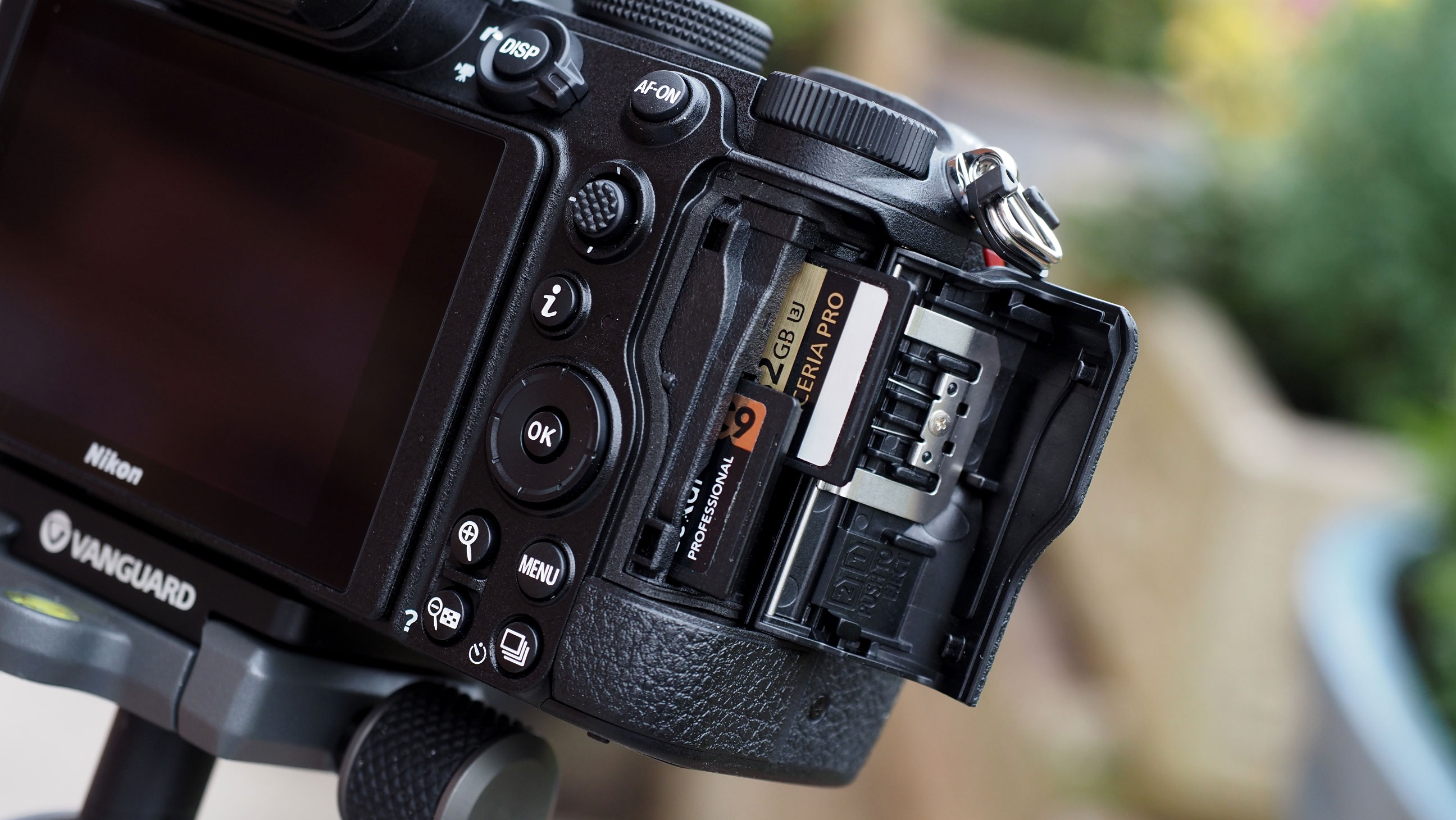
• Nikon Z5: Dual SD/SDHC/SDXC UHS-II slots
• Nikon Z50: Single SD/SDHC/SDXC UHS-I slot
It seems rather at odds with its lower maximum continuous shooting rate and poorer video credentials, but the Z5 has two card slots that are both compatible with the faster UHS-II media. The Z50 has just one slot and it’s UHS-I compliant.
The dual card slots give extra storage capacity or one card can be used as a back-up for the other. Alternatively, stills can be saved to one card and video to the other.
10. Battery
• Nikon Z5: EN-EL15c rechargeable Li-ion
• Nikon Z50: EN-EL25 rechargeable Li-ion
The Z5 uses a larger battery than the Z50 and in CIPA testing it can capture 470 images when the rear screen is used to compose shots or 390 images with the electronic viewfinder. The Z50’s battery lasts for around 300 shots, which means a spare or two is pretty much essential for a day out with the camera.
Nikon Z5 v Z50: conclusions

While a full-frame camera is attractive because of its enhanced image quality and the ability to restrict depth of field more at any given aperture, there are some areas where the Z50 comes out on top over the Z5.
The Z50’s maximum continuous shooting rate is almost 3x that of the Z5, for example, and the framing doesn’t change when you switch from shooting stills to recording 4K video. In addition, the Z50’s screen has a greater range of movement that is helpful when you’re shooting selfies or you’re vlogging. The Z50 is also smaller and lighter, and although this comes with the loss of a second memory card slot and a headphone port, you gain a small pop-up flash.
Those with larger hands, or who want to build up a collection of full-frame lenses with an eye of a future camera upgrade, however, may wish to opt for the Z5. Currently, Nikon offers a much wider range of lenses for the full frame Nikon Z series than it does for the smaller format Nikon Z50.
How we test cameras
Why you can trust Digital Camera World
We test mirrorless and DSLR cameras both in real-world shooting scenarios and in carefully controlled lab conditions. Our lab tests measure resolution, dynamic range and signal to noise ratio. Resolution is measured using ISO resolution charts, dynamic range is measured using DxO Analyzer test equipment and DxO Analyzer is also used for noise analysis across the camera's ISO range. We use these real-world testing and lab results to inform our comments in buying guides. For compact cameras and phones, we judge on real world handling and photographic results alone.
Read more:
• Best Nikon camera
• Nikon Z5 review
• Nikon Z50 review
• Best mirrorless cameras
• Best Nikon Z lenses
Get the Digital Camera World Newsletter
The best camera deals, reviews, product advice, and unmissable photography news, direct to your inbox!
Angela has been testing camera gear from all the major manufacturers since January 2004 and has been Amateur Photographer’s Technical Editor and Head of Testing for Future Publishing’s photography portfolio (Digital Camera Magazine, PhotoPlus: The Canon Magazine, N-Photo, Practical Photoshop, Photography Week and Professional Photography magazines, as well as the Digital Camera World and TechRadar websites). She is the founder of SheClicks - a community group that encourages and supports female photographers.

